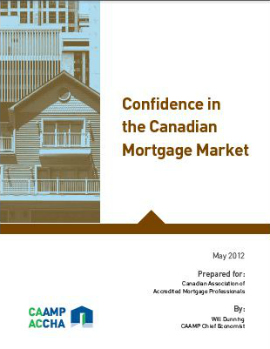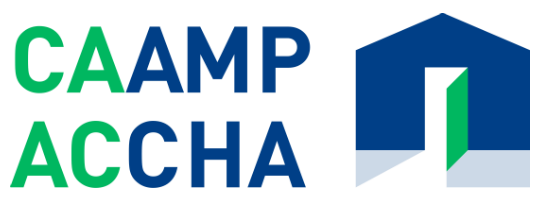If you love stats, you’ll love CAAMP’s (Canadian Associates of Accredited Mortgage Professionals) semi-annual report on the Canadian mortgage market. You can read the full report here (be warned, it’s 40 or so pages long), but here are some interesting stats that I’ve pulled from it.
 There is currently $994 billion in mortgages on primary residences and $161 billion in Home Equity Lines of Credit (HELOCs).
There is currently $994 billion in mortgages on primary residences and $161 billion in Home Equity Lines of Credit (HELOCs).- The total value of owner-occupied housing in Canada is $3.48 trillion. There are approximately 13.7+ million households in Canada – 9.85 million are homeowner households, while 4.1 million are renter households.
- 83% of Canadians have at least 25% equity in their home. The average amount of equity is estimated at $214,000. The average mortgage principal outstanding is around $170,000.
- Individuals with HELOCs have an average of 82% equity in their homes. Those with mortgages and HELOCs have an average of 41% equity in their homes. For those with just mortgages, equity is 49%.
- The total amount of equity take out during the past year is $46 billion, with most funds used for renovations ($17.25 billion), followed by investments ($10 billion) and debt consolidation ($9.25 billion).
- Among all mortgage holders, 65% have fixed rate mortgages, 29% have variable rate mortgages and 7% have a combination of both.
- 75% of outstanding mortgages have amortization periods of 25 years or less.
- 19% of mortgage holders have made at least one lump sum contribution to their mortgage in the past year.
- For mortgages that have been repaid during the past two decades, actual repayment periods have generally been only two-thirds of the contracted periods.
- 23% of mortgage holders have increased their monthly payments in the last year. 19% have made a lump sum contribution to their mortgage.
- Among borrowers who took out a new mortgage during 2011, 31% obtained the mortgage from a mortgage broker (up 4% from last year – people are starting to figure it out – we can save you $$$)! For current mortgages, regardless of when they were obtained, 26% were obtained from a mortgage broker.
- Among mortgage holders who purchased their homes in the past 5 years, if it had been mandatory to put down 10% to secure a mortgage, 45% said they would have been unable to make the purchase.
- The average 5-year fixed rate discount was 1.77% lower than posted rates (2011 to present).
- The average mortgage rate in 2011 is 3.64%, down from 4.04% a year earlier. For mortgages on homes purchased recently, the average rate is 3.48%.
- Of those who renewed their mortgages in the last twelve months, 74% are paying lower rates than previously.
- Accumulating down payment remains a considerable challenge to potential home buyers in Canada. 52% of tenants point to lack of a down payment as a reason they rent rather than own.
- If the minimum down payment in Canada was 10% instead of the current 5%, there would have been 100,000 fewer home purchases annually from 2007 to present day.
- There has been a considerable amount of “locking in” (converting from variable rate to fixed rate mortgages). 14% of fixed rate mortgage holders (slightly over 500,000) have locked in during the past 12 months.
- 2012 mortgage credit growth of 8.5% will be below the 10 year average of 9.1%.
So there you have it – more stats than you’d ever want to know about the Canadian mortgage industry. Again, you can read the full report here. Anything specific catch your eye? Any stats surprise you?

I was surprised the average mortgage amount still owing is 170000. Mine is over double that amount. 🙁
Pretty scary!
Yeah, I imagine the number is skewed in both directions by larger cities (Toronto, Vancouver, Montreal), and then in the other direction by inexpensive housing costs in smaller towns across the country.